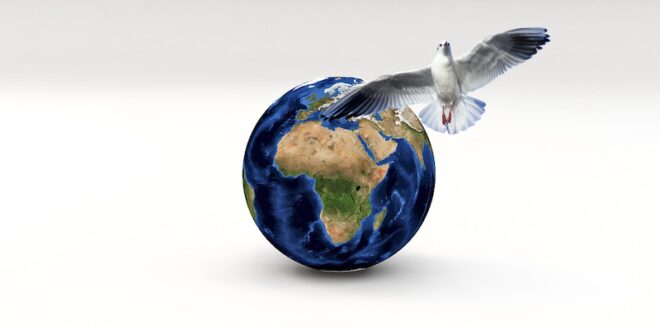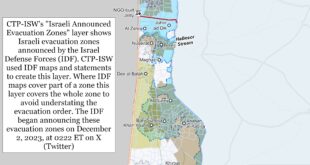Middle Eastern violence has come to be associated with the area, which is rich in history and cultural variety. The area is gripped by an ongoing sequence of violence and political instability that seems to never stop, ranging from the current civil conflicts in Syria and Yemen to the long-running Israeli-Palestinian conflict. Numerous people have been displaced as a consequence of these wars, and extensive infrastructure damage has also been caused. Additionally contributing to its volatility is the area’s frequent association with terrorism. The critical issue is how to bring about peace and stability in the Middle East.
Recognizing the historical backdrop is necessary before we can comprehend the difficulties the Middle East is now experiencing. These conflicts have historical origins that are profoundly ingrained in sectarian struggle, colonialism, nationalism, and resource competitiveness. For example, by splitting areas arbitrary without respect to racial or sectarian borders, the Sykes-Picot Agreement of 1916 greatly influenced the geopolitical landscape of today. Due to this history, there are still unsolved territorial problems and tensions between the many religions in the area, which feed the present hostilities.
Since 2011, when President Bashar al-Assad brutally suppressed pro-democracy demonstrations, a bloody civil war has raged in Syria. The peace process has become more challenging as a result of the conflict’s attraction of several local and international participants. Similar to this, there are many different groups involved in Yemen’s civil war, which began in 2014. Saudi and Emirati engagement has made matters more difficult.
Unresolved territorial and sovereignty issues as well as opposing nationalisms at the root of the Israeli-Palestinian conflict, one of the longest-running and divisive conflicts. Numerous attempts have been made to end the conflict, but it has persisted instead, further destabilizing the area and preventing the establishment of a more comprehensive regional peace.
Instability in the area is both a source of and a result of terrorism, a serious concern in the Middle East. In order to expand their reach, gather supporters, and carry out activities, extremist organizations like ISIS take advantage of the turmoil and authority vacuums brought on by war. They also obstruct attempts to bring about peace and healing by escalating already-existing tensions by their aggressive behavior.
It takes a thorough, inclusive, and multilateral strategy to bring stability to the Middle East, which is a tough challenge. Inclusion should be a top priority in peace efforts, and all parties who have been harmed should have their complaints recognized and addressed. The international community should encourage conversation, support measures that create confidence, and provide humanitarian help and rebuilding assistance rather than imposing answers from outside.
Politics reform is also important. Building confidence in institutions and reducing the attraction of extreme narratives may both be accomplished with the support of transparent, accountable governance mechanisms. The interconnectedness of the Middle Eastern issues must also be acknowledged by regional players, who must also endeavor to achieve a more comprehensive peace.
Long-term stability also depends on the growth of the economy and investments in education. Individual empowerment, a decrease in the attractiveness of extreme beliefs, and the promotion of societal cohesiveness may all be achieved by addressing economic injustice and ensuring access to high-quality education.
The Middle East is strategically significant, mostly because of its enormous oil reserves, which has long drawn the attention of outside countries. However, this participation has often made already-existing tensions and disputes worse. For example, the 2003 U.S. invasion of Iraq not only left a power vacuum filled by extremist organizations like ISIS but also widened sectarian strife and brought about general instability. This emphasizes the necessity for a comprehensive knowledge of the area and for foreign policies that give peace and stability a higher priority than transient geopolitical benefits.
Conflicts in the area have also been significantly influenced by regional powers like Iran, Saudi Arabia, and Turkey. Further complicating peace attempts are the proxy conflicts that often result from their rivalries and struggle for control in the area. Thus, if the interests and concerns of these significant regional stakeholders are not taken into account, real peace cannot be attained.
Although state-level diplomacy and involvement are important, the role played by civil society and grassroots movements in resolving disputes should not be undervalued. In many cases, bottom-up initiatives are more enduring and efficient than top-down ones since these organizations may bring people together, promote communication, and handle problems. The Arab Spring served as a witness to the strength of civil society and the yearning for change among Middle Eastern people and to the viability of bottom-up methods to conflict settlement.
In order to promote long-term peace and stability, the Sustainable Development Goals (SDGs) of the UN may also be addressed. This involves eradicating poverty, ensuring access to a high-quality education, ensuring access to clean water and sanitation, and fostering economic prosperity. In addition to improving living circumstances, achieving these objectives would help to reduce some of the factors that cause conflict, such lack of opportunity and poverty.
The Middle East’s continuing wars have also led to one of the worst refugee crises in contemporary history. The urgent humanitarian needs of refugees and internally displaced people must be addressed with comprehensive planning. Long-term solutions should, however, prioritize making it easier for refugees to return home safely and integrate back into society.
In conclusion, the road to peace and stability in the Middle East is a difficult one that calls for the combined efforts of the international community, regional actors, and local populations. It necessitates an all-encompassing strategy that tackles the underlying causes of conflict, upholds the sovereignty and interests of the countries in the area, and puts the wellbeing of its people first. The Middle East’s peace and prosperity will undoubtedly contribute to a more stable and peaceful globe, making the challenge enormous but the stakes much greater.
 Eurasia Press & News
Eurasia Press & News




